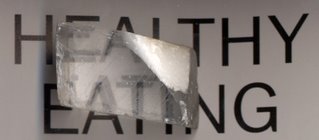Part 2, Chapter 11

Why is a scholar of rhetoric, composition and professional writing (I’m not a literary scholar) producing a commentary on a novel? Two reasons. First and foremost: for fun. Ever since the day I finally finished Gravity’s Rainbow (back in the 1970s), I’ve taken great pleasure in working my way through Pynchon’s complex tapestries of narrative, scientific and technological elaborations, jokes, bawdy songs, and descriptions of time and space (history and geography). The second reason is scholarly. Pynchon’s use of writing genres has always struck me as more political than the practice of most writers. Since the use of discourse for political purposes was the original impetus for the creation of rhetoric as a scholarly discipline by the Greeks (http://en.wikipedia.org/wiki/Rhetoric), such an interest is natural for a rhetorician. Since Against the Day is set in a period of extraordinary political and social change (1893 to about 1930), a period marked by the emergence of modernity, my scholarly interest is intensified. Since I first researched the early Futurists in my dissertation on the manifesto genre, I’ve been interested in trying to understand this period where the social consciousness of Western cultures experienced a sudden shift in worldview, a period my own grandparents lived through. As Virginia Woolf put it in “Mr. Bennett and Mrs. Brown” (1924): “on or about December 1910 human character changed.”
Every so often, a text enters the academic canon[1] carrying a message less about scholarly arguments, literary interpretation, or cultural performance, and instead seems to be primarily focused on engaging its audience in political action. We sometimes label such texts as polemics, a mental act that tends to classify the texts as belonging to a rhetorical genre: texts like Luther’s "Ninety-Five Theses", Marx and Engel’s The Communist Manifesto, and The Port Huron Statement of the Students for a Democratic Society. Even more rarely, we encounter texts which seem to mix the political, the rhetorical, and the literary—many of the works of Virginia Woolf come to mind. Against the Day seems to inhabit the same space.
Part two of the novel is titled “Iceland Spar.” Iceland Spar is a double-refracting calcite used for optical purposes. The strange medal or seal seen on the book’s cover looks as though it may be an object which might be understood if viewed through the lens of Iceland Spar. In Chapter 10, the Chums use a pearl transformed through the magic of “induced paramorphism” (114) into Icelandic Spar to view a “message from Upper Hierarchy” (114). The message appears on “a reflective screen set on one bulkhead...[where] like a photographic image emerging from its solution, a printed message began to appear” (114).
A number of recurring themes seem to be coming together around “Iceland Spar.” The concept of revelation, particularly the use of science to achieve revelatory enlightenment, is familiar to those of us who remember Captain Blicero (Captain of the White North) and Pointsman in GR. In some ways, Pynchon’s portrayal of certain scientists who pursue truth a rabid fervor exceeding that of Pentecostal Christians, is similar to his lampooning of Psychiatry through his portrayal of Dr. Hilarious in The Crying of Lot 49. These scientists and engineers are invariably found to be in the service of a hierarchy, and we may be slowly being introduced to another one of these Luddite narratives involving Dr. Tesla and Kit Traverse’s work for Scarsdale Vibe. Is Vibe the mysterious hand behind the Chums of Chance, also?
In Chapter 11, we begin to think so. The boys are in search of the Étienne Louis Malus, a floating scientific lab named after the scientist who did pioneering work on double refracting crystals! Pynchon, a writer who resists interpretation, seems to be hitting us in the head with a Rosetta Stone here. The Chums encounter a Russian Doppelganger of themselves along the way—Tovarishchi Slutchainyi (123) is Russian for “accidental comrades,” or “Chums of Chance.” The boys miss the steamer, which recently left the Icelandic village of Isafjordr, and the reader leaves the Chums as they meditate over Blue Ivory figurines carved from the “Preserved bones of real prehistoric mammoths” (125) in search of “some expression of truth beyond the secular” (126). If the Bad Vibes have made a religion of secular science, then the Chums’ search for something else seems to be Pynchon’s hint to us that the boys, despite their service to the mysterious Upper Hierarchy, are basically “good” or “innocent.” Or, he is setting up their fall from grace.
The remainder of the chapter describes the stay of the steamship at Isafjordr. We meet Dr. Vormance, leader of the expedition, and their scientific officer, Dr. Counterfly, who may be Chick’s mysterious con-man father. We also meet Fleetwood Vibe, who is monitoring the expedition at the behest of his father who is financing it. And we meet Iceland natives Constance Penhallow, and her grandson Hunter, an artist who stows away with the expedition, another naïve mascotte, doppleganging, or “double-refracting” Darby’s role with the Chums! Oh Pynchon!!!!!
We also meet the scientists of the Transnoctal Discussion Group, (a noctal is a barbiturate—seems to be associated with the night, sleep, and death. Of course, the group is meeting in Iceland, where the winter nights are so long as to make the day almost disappear—i.e. act Against the Day), a group of mathematicians who somewhat resemble Pointsman’s nefarious group of S-R Psychiatrists in GR. The group includes Dr. Vormance; Dr. Templeton Blope, a Quaternion mathematician from the University of the Outer Hebrides—another possible connection to Neal Stephenson’s Cryptonomicon; Blope’s “collegial nemesis” (131), Dr. Hastings Throyle; “noted Quaternionist Dr. Ganesh Rao of Calcutta University” (130); and Otto Ghloix, Expedition alienist. There may be others.
[1] I am using the term academic canon to refer to texts which elicit significant interest from academic audiences, rather than using the word to refer to a contested mental model of accepted literary texts.


0 Comments:
Post a Comment
<< Home